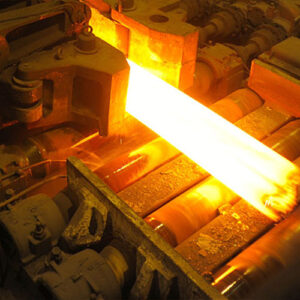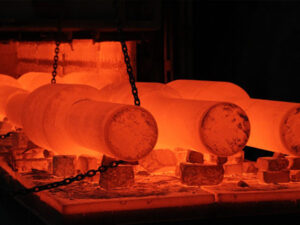Introduction
In the world of metallurgy and manufacturing, few materials are as vital and versatile as hot work tool steel. It’s the unsung hero behind the scenes, enduring extreme temperatures and mechanical stress to shape the products we use every day. At its core lies a remarkable property: heat resistance. In this comprehensive guide, we’ll delve deep into the intricate science of hot work tool steel’s heat resistance, exploring its applications, characteristics, and why it’s the backbone of numerous industries.
The Crucial Role of Acier à outils pour travail à chaud<a name=”role-of-hot-work-tool-steel”
Acier à outils pour travail à chaud stands as an indomitable force in industries where heat reigns supreme. Its ability to withstand extreme temperatures while retaining structural integrity makes it an invaluable material for shaping metals and alloys.
What Is Heat Resistance?<a name=”what-is-heat-resistance”
1. Defining Heat Resistance
Heat resistance is the capacity of a material to maintain its form and mechanical properties when exposed to high temperatures. In the context of hot work tool steel, this property allows it to thrive in the blistering environments of die casting, forging, and extrusion.
Hot Work Tool Steel: A Composition for Success<a name=”composition-for-success”
2. Alloyed for Excellence
The secret to hot work tool steel’s heat resistance lies in its carefully crafted composition. It includes elements like chromium, tungsten, molybdenum, and vanadium, each contributing to its unique heat-resistant properties.
Heat Resistance in Action<a name=”heat-resistance-in-action”
3. Stability Under Fire
When hot work tool steel encounters temperatures exceeding 1000°C (1832°F), it doesn’t flinch. It remains stable and unwavering, ensuring that the molds, dies, and tools maintain their precision.
Challenges in High-Temperature Environments
name=”challenges-in-high-temperature-environments”
4. The Battle Against Heat
In high-temperature environments, tools and dies face a relentless battle against heat-induced changes. Without proper heat resistance, they could warp, lose their hardness, or even fail catastrophically.
The Heat Treatment Factor<a name=”heat-treatment-factor”
5. Enhancing Heat Resistance
Hot work tool steel’s heat resistance can be further optimized through heat treatment processes such as hardening and tempering. These treatments fine-tune its properties to meet the demands of specific applications.
Applications in Die Casting<a name=”applications-in-die-casting”
6. Forging Precision in Die Casting
Die casting is a process where molten metal is injected into molds under intense heat and pressure. Hot work tool steel molds play a pivotal role here, enduring the extreme temperatures and ensuring the castings meet precise specifications.
Forging Ahead: Heat Resistance in Forging<a name=”forging-ahead-heat-resistance”
7. The Power of Heat Resistance in Forging
In forging, hot work tool steel shines as it powers through the most punishing conditions. It forms dies and punches that shape metals under intense heat, all while maintaining their hardness and durability.
Extrusion Excellence<a name=”extrusion-excellence”
8. Shaping the Future through Extrusion
Extrusion involves forcing materials through a die to create complex shapes. Hot work tool steel in extrusion dies ensures the production of precise profiles in industries ranging from aluminum to plastics.
Hot Work Tool Steel vs. The Heat: Who Prevails?<a name=”hot-work-tool-steel-vs-the-heat”
9. The Ultimate Battle
The battle between hot work tool steel and scorching temperatures rages on, and it’s a testament to the steel’s exceptional heat resistance that it remains triumphant. It’s the unsung hero in the relentless fight against heat-induced challenges in manufacturing.
FAQ<a name=”faq”
1. Is hot work tool steel the same as high-speed steel?
No, hot work tool steel and high-speed steel are distinct categories of steel. Hot work tool steel is designed for applications where it must withstand high temperatures, while high-speed steel is primarily used for cutting tools and drill bits due to its high hardness and wear resistance. Both serve different purposes in the industrial world.
2. Can hot work tool steel be used in cold work applications?
Hot work tool steel is primarily designed for high-temperature applications, and while it can be used in cold work, it may not perform optimally in those conditions.
3. What are some common grades of hot work tool steel?
Common grades of hot work tool steel include H13, H11, and H21. Each grade has its own unique combination of properties, making it suitable for specific applications. The choice of grade depends on factors such as the type of hot work, operating temperatures, and tool design.
4. Is hot work tool steel weldable?
Yes, hot work tool steel can be welded, but the process can be challenging due to its high alloy content. Welding should be carried out by skilled professionals using appropriate welding techniques and consumables to ensure the integrity of the tool steel.
5. What precautions should be taken when working with hot work tool steel?
Safety precautions are essential when working with hot work tool steel, given its exposure to high temperatures and potential hazards. Proper protective gear, including heat-resistant clothing and eye protection, should be worn. Additionally, workers should be trained in safe handling practices to minimize risks.
Conclusion<a name=”conclusion”
The heat resistance of hot work tool steel is not just a scientific marvel; it’s the backbone of modern manufacturing. Its unwavering stability and durability in the face of extreme temperatures power industries that shape our world. Understanding the intricacies of heat resistance is crucial for selecting the right material in manufacturing processes, whether in die casting, forging, extrusion, or any application where heat is the ultimate adversary. Hot work tool steel’s remarkable heat resistance ensures that it remains the unsung hero, silently enduring and shaping the products we rely on every day.

